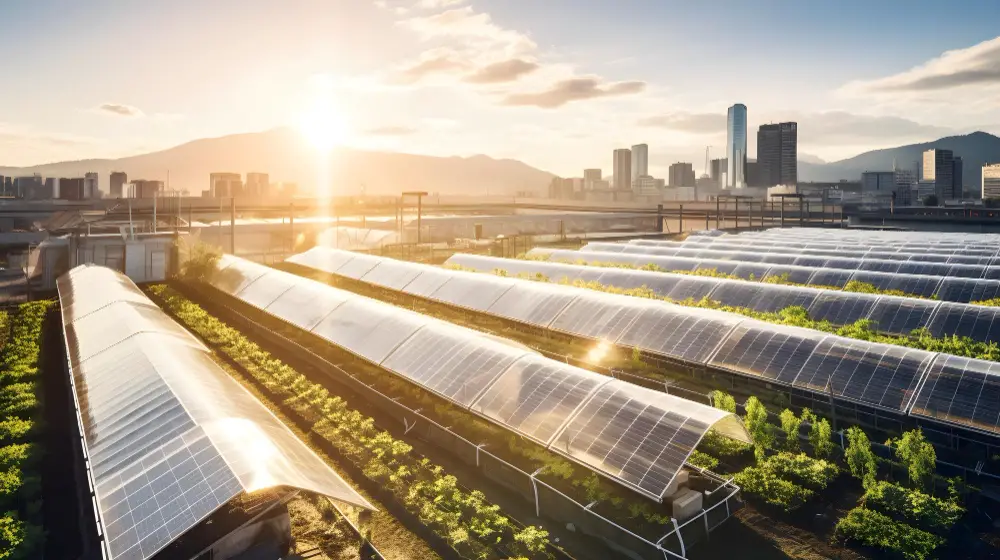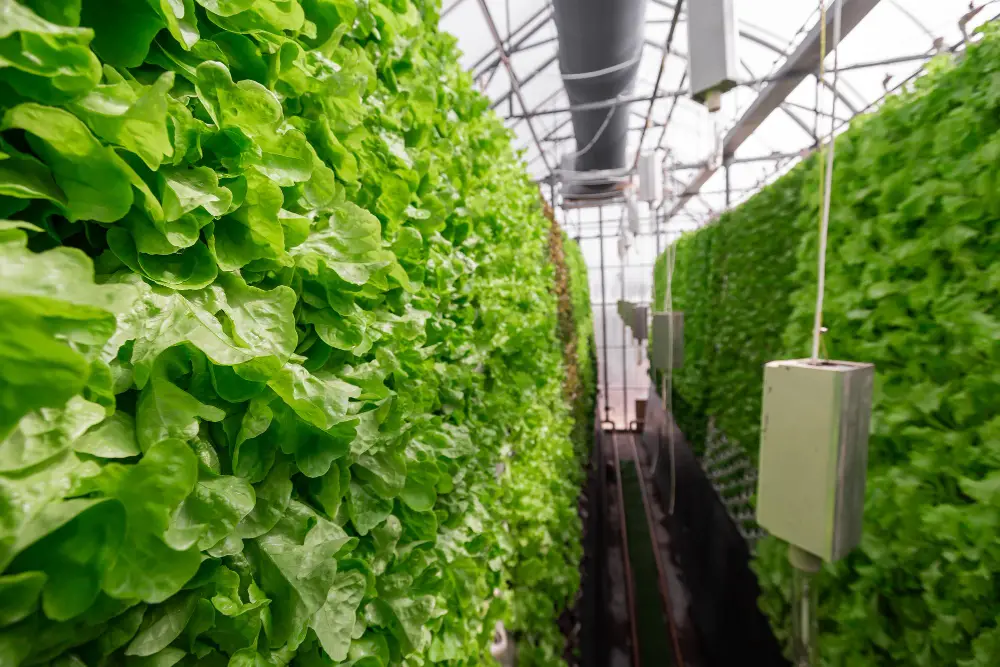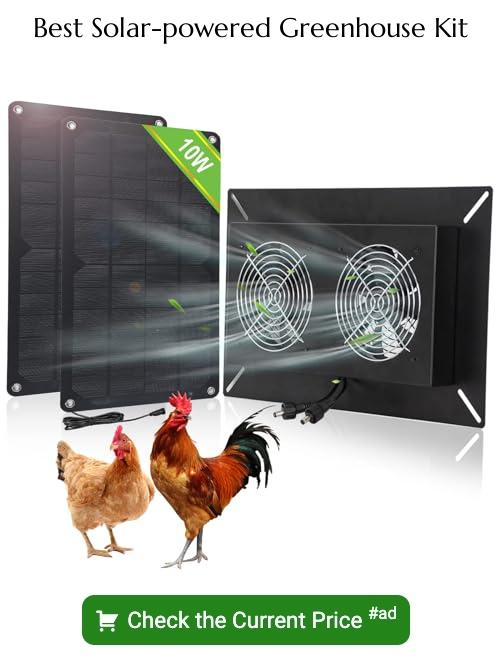Last updated on
Federal solar incentives lower installation costs by up to 26%, while states provide additional subsidies. Support programs exist to assist adoption.
An impactful incentive is the USDA’s Rural Energy for America Program (REAP) grant, which provides funding for farmers to install renewable systems. The REAP grant covers up to 25% of project costs for solar power implementations.
Government-funded lending facilities offer affordable capital for solar upgrades. Reduced-interest loans ease renewable transitions for vertical farms.
Vertical farms can efficiently grow plants all year long with the help of solar energy. The sun’s rays can power the lights, heating, cooling, and water pumps that keep plants healthy. This approach ensures sustainability by relying on renewable solar power instead of fossil fuels.
What's Inside
How Solar Panels Help Vertical Farms

Solar panels convert sunlight into electricity to run equipment. Smart energy managers ensure that power is used wisely, reducing energy wastage. This maintains very low greenhouse gas emissions.
Growing Crops Year-round
Solar lighting enables vertical farms to cultivate crops in all seasons. Special LED lights powered by the sun add extra days to the natural growing times. This allows farming in all 12 months of the year instead of just spring and summer.
Adjustable solar lights can be set to match each growth stage. This results in higher yields at the right times to meet customer demand. The conditions stay perfect in any weather.
Saving Money over Time

Putting in solar power gear costs more upfront. But these systems pay for themselves within 5-7 years on average. Over their 25+ year life, solar equipment gives 30-50% cheaper electricity than conventional energy. Those savings really add up.
Preserving Precious Resources
Solar devices like water pumps cut agricultural water needs by 30%. And renewable power keeps energy independence high. So sunlight can reduce resource strain on the environment.
Expanding Renewable Energy
More and more farms are switching to solar as costs come down. Experts say renewable energy from the sun could meet 60% of farming’s needs by 2050. This would greatly lower greenhouse gases from food production.
Incentives Make It Affordable
State and federal discounts lower solar equipment costs by up to 25%. Special USDA grants help farms cover up to 25% of each solar installation. Low-interest financing also makes the transition easier.
Innovation Continues
Many new solar technologies are being created, like transparent panels and artificial intelligence managers. These improvements will allow vertical farms to become 50% more efficient by 2030.
| Strategy | Upfront Cost | Expected Energy Savings | Payback Period | Pros | Cons |
| Smart Thermostat | $250 | 10-30% on HVAC | 2-3 years | Precise temperature control, integrates with smart domestic devices, intuitive interface | Requires WiFi connectivity |
| Attic Insulation | $1,200 | 15-20% on cooling and heating | 5-8 years | Long-term solution increases comfort | High upfront cost, professional installation required |
| ENERGY STAR Appliances | $500+ extra per appliance | 20-30% per upgraded appliance | 4-7 years | Uses less energy for same functionality and is eligible for rebates | Higher purchase costs |
| Solar Panels | $10,000 – $20,000 | 50-100% of electricity needs | 7-15 years | Reduces electrical costs and carbon footprint | Expensive installation requires direct sunlight |
| Electric Vehicle | $30,000+ | Save $750+ per year on fuel costs | 10+ years | Lower fuel and maintenance costs | High vehicle and charging equipment costs |
Enhancing Sustainability
Adopting solar technology minimizes vertical farms’ reliance on fossil fuels, enhancing sustainability. Solar energy cuts greenhouse gas emissions from farming by 21.3 million metric tons annually.
Year-round Crop Production
Achieving 12 Months of Harvests
Transitioning to year-round crop cultivation enables vertical farms to overcome seasonal limitations and meet consumer demand consistently. Solar power facilitates this through supplemental lighting and greater control.
Expanding and Growing Cycles
Strategically timed solar-generated lighting extends crops’ natural seasons by up to 150 extra days. This supplemental lighting rig allows farm managers to stagger seeding and harvests for staggered crop rotations. As a result, productive cultivation persists for 12 months.
Tailoring Growth Stages
In addition to expanding cycles, solar energy enables precise lighting schedules tailored to various plant growth phases like germination, seedling establishment, vegetative, and flowering stages. This customized control results in consistently timed, high-yield harvests.
Optimizing Light Spectrums
Solar-powered LED fixtures also provide control over light quality and spectra. By tuning color wavelengths to align with crops’ photosynthetic needs, vertical farms optimize yields and nutritive values year-round. This promotes consistent product quality.
Maintaining Ideal Conditions
Supplemental solar lighting works in conjunction with temperature moderation technology, enabling suitable growing parameters year-round. The combined climate control facilitates healthy, resilient crops regardless of external seasonality.
Solar-powered LED grow lights can extend growing seasons by up to 150 days. Strategically timed lighting enables consistent year-round crop yields.
By leveraging the reliability and customizability of solar energy, vertical farms overcome seasonal restrictions. The innovative approach empowers fulfilling consumer demand consistently across 12 months.
Government Incentives and Support
Accessible Financing
Government-funded lending facilities offer affordable capital for solar upgrades. Reduced-interest loans ease renewable transitions for vertical farms.
Cost-effective Operations
Rapid Return on Investment
While solar power systems require upfront costs, most investments pay for themselves within 5-7 years. These projects yield an average ROI of 20-25% in the long run.
Comparing Expenses
When factoring in lifespan savings, solar electricity costs 30-50% less than conventional energy. Heating bills shrink by 50-75% while cooling costs drop 20-30%.
| Energy Source | Average Cost per kWh | Installation Cost | Maintenance Costs |
| Grid Electricity | $0.13 | $0 | Low |
| Propane | $0.08 | $500-$2,500 | Moderate |
| Natural Gas | $0.04 | $2,500-$5,000 | Low |
| Heating Oil | $0.21 | N/A | High |
| Solar PVs | $0.05 | $10,000-$20,000 | Low |
Saving Money
With solar energy prices declining, adopting this technology is becoming progressively more affordable. The approach cuts overhead expenses sustainably.
Sustainable Water Management
Efficient Irrigation
Solar pumps and irrigation tools reduce agricultural water usage by 30%. Combined with rainwater harvesting, solar technology saves 50,000 gallons annually per acre.
Cutting Water Costs
Solar-powered irrigation drives financial savings too, reducing water-related expenses by 40-60%. For vertical farms, these technologies enhance profitability.
Preserving Resources
With climate challenges straining water access, solar-assisted irrigation enables more responsible use of this precious resource. The approach aligns with eco-friendly values.
Climate Control and Ventilation
Ideal Growing Conditions
Heating and cooling units powered by solar maintain optimal greenhouse temperatures within 1° Fahrenheit. This climate control facilitates healthy plant development.
Efficient Ventilation
Ventilation systems leveraging solar energy minimize costs by 25-40%. Proper airflow circulation is promoted through energy-efficient fans.
Consistent Temperature Management
By adopting solar technology, vertical farms ventilate and control climates affordably year-round. This empowers operations to consistently provide ideal conditions consistently.
Reliability and Resilience
Minimizing Downtime
Solar energy systems with battery backups offer 99.9% uptime reliability. By mitigating grid disruption risks, this power supply builds resilience.
Uninterrupted Operations
With solar backup, vertical farms avoid potential downtime costs from outages, enhancing productivity. The renewable energy source provides energy independence.
Carbon Footprint Reduction
Fighting Climate Change
Each 1 MW solar array curtails greenhouse emissions equal to 33,000 tons/year. Renewable technology adoption directly combats climate change.
Improving Sustainability
Solar-powered vertical farms emit 4,000 fewer tons of CO2 per acre annually than conventional operations. This progress enhances environmental sustainability.
Expanding the Movement
As solar costs fall, supporting incentives grow. Accelerated adoption can reduce agriculture’s carbon footprint 60% by 2050 through renewable transition.
Technological Advancements and Future Prospects
Cutting-Edge Innovation
Emerging transparent solar panel models seamlessly integrate power generation without sacrificing natural light. Technology breakthroughs highlight promising potential.
Workforce Opportunities
Industry growth and technical skills development is creating jobs. Solar energy may employ over 80,000 new US workers by 2030 according to projections.
Boosting Efficiency
With AI and automation, analysts forecast solar-assisted vertical farms will achieve 50% efficiency gains by 2030. Continued progress through innovation persists. When factoring lifespan savings, solar electricity costs 30-50% less than conventional energy. Heating bills shrink by 50-75% while cooling costs drop 20-30%.
FAQs
1. How much does a solar array system cost for a greenhouse?
For small to medium greenhouses, solar equipment runs $10,000-$75,000 on average after incentives kick in. Exact costs depend on many factors.
2. Can solar energy work year-round even where skies are cloudy?
Yes, solar provides enough electricity daily even with cloud cover. Battery backup systems store extra energy to supplement cloudy days as needed.
3. What equipment maintenance is needed?
Solar panels just need occasional cleaning. The rest of the system should be checked twice a year and repaired by professionals as needed. This equipment is built to last 25+ years.
The Takeaway
Embracing solar technology allows vertical farms to grow food far more sustainably. Renewable solar energy saves money over time while reducing environmental harm.
And continued innovation promises to make solar-powered vertical farms even more efficient in the future. Switching to solar helps farmers thrive for decades while protecting the planet.





